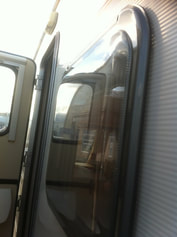Caravan Breakers Durham
Cant Find What Your Looking For? Use The Search Box.
Contact Us Below Home
|
|
Campervan Water FilterCaravan Breakers Durham Page Or Would You Like To Campervan Water Filter For The Spares You Need By Area Or If You Would Rather Search By Manufacturer
|
Plastic Caravan Step
Hello caravan breakers Durham, I'm trying to find a plastic caravan step and nearside rear window for a 2000 avondale rialto 390-2 millennium ed. roxite number is roxite 60 d78 9908 size 675mm wide by 525mm high silver top hinge green/grey tint without surround. if you need further info or pictures please contact me. Regards.
Hi, I've bought a buccaneer elan 15 caravan and it has not got oven and hob. The hob opening is 450 mm x 370 mm oven opening is h 600 mm x d 460 mm x w 475 mm not wanting to spend too much do you have anything that will fit. I'm ok if its smaller than these sizes as I can make packers to deal with the gaps. Thanks.
Hi, I've bought a buccaneer elan 15 caravan and it has not got oven and hob. The hob opening is 450 mm x 370 mm oven opening is h 600 mm x d 460 mm x w 475 mm not wanting to spend too much do you have anything that will fit. I'm ok if its smaller than these sizes as I can make packers to deal with the gaps. Thanks.
Caravan Step
If you have to travel to a County Durham caravan breakers a district in the North East of England then remember it has always been a favourite family destination for short breaks or long weekends away.
So why not combine your trip to buy spare parts from a caravan breakers Durham like a caravan step
with a holiday, this area іs renowned for it's beautіful scenery and іt's famous attractions.
So why not combine your trip to buy spare parts from a caravan breakers Durham like a caravan step
with a holiday, this area іs renowned for it's beautіful scenery and іt's famous attractions.
Caravan Waste Hose
Such as the high force waterfall and Durham university's botanic gardens, yet still has a number of equally beautiful, relatively undiscovered spots and exciting attractions.
Take the Castle Eden Dene national nature reserve as an example. Here you can find 12 miles of wooded valley with steep banks and rough paths, a perfect location for a family day out. Do you have a caravan waste hose?
Take the Castle Eden Dene national nature reserve as an example. Here you can find 12 miles of wooded valley with steep banks and rough paths, a perfect location for a family day out. Do you have a caravan waste hose?
Static Caravan Steps
There's also the stunning Hamsterly forest on the edge of the North Pennines area of outstanding natural beauty. Іt has 2000 hectares of mixed woodland offering cycle routes and horse riding tracks for the whole family.
Your family are obviously the outdoor type as your main reason for the journey is buying caravan accessories from a county Durham caravan breakers , be sure to see the national railway museum with it's variety of vehicles and locomotives and static caravan steps.
Your family are obviously the outdoor type as your main reason for the journey is buying caravan accessories from a county Durham caravan breakers , be sure to see the national railway museum with it's variety of vehicles and locomotives and static caravan steps.
Waste Pipe For Caravan
Hi I'm looking for waste pipe for caravan can you help? It also holds a variety of special events throughout the year and offers demonstrations and guided tours. Or if it's something completely different you are looking for, then diggerland is a brilliant family adventure park.
Іt has over 15 rides and drives and gives you and your children the chance to drive real construction machinery. The park has an on site cafe, educational or school groups are also welcome.
Іt has over 15 rides and drives and gives you and your children the chance to drive real construction machinery. The park has an on site cafe, educational or school groups are also welcome.
Caravan Steps For Sale
Durham is also home to numerous entertainment venues, cinemas and theatres, all packed with great shows throughout the year. However, if a good day's shopping is more your idea of entertainment, then this city will spoil you for choices.
Іt's home to an abundance of small boutique and craft shops such as wild & funk as well as large shopping centres and garden centres. Durham indoor market is extremely popular amongst locals and tourists alike and has retained its Victorian character perfectly.
Іt's home to an abundance of small boutique and craft shops such as wild & funk as well as large shopping centres and garden centres. Durham indoor market is extremely popular amongst locals and tourists alike and has retained its Victorian character perfectly.
Caravan Waste Pipe For Service Pitch
If your telling friends and family about your excellent trip to a caravan breakers Durham you can say if they are not caravanners that when it comes to accommodation in Durham then you will definitely not be short of choices.
From caravans with caravan steps for sale to hostels, to five star luxury hotels, the city has something to suit every family and their budget. The abundance of camping and caravanning sites and facilities with caravan waste pipe for service pitch make it an ideal location for an outdoor family weekend or even a longer summer holiday.
From caravans with caravan steps for sale to hostels, to five star luxury hotels, the city has something to suit every family and their budget. The abundance of camping and caravanning sites and facilities with caravan waste pipe for service pitch make it an ideal location for an outdoor family weekend or even a longer summer holiday.
Caravan Breakers Durham Towns We Cover
Caravan Sink Waste
| Caravan Breakers Durham | Darlington Caravan Breakers | Caravan Breakers Bishop Auckland | Caravan Breakers Hartlepool |
Home
Or Would You Like To Search For The Caravan Sink Waste You Need By Area Or If You Would Rather Search By Manufacturer
Links To All Parts Pages.
Back To Top of Caravan Breakers Durham
Home
Or Would You Like To Search For The Caravan Sink Waste You Need By Area Or If You Would Rather Search By Manufacturer
Links To All Parts Pages.
Back To Top of Caravan Breakers Durham
|
|
|


